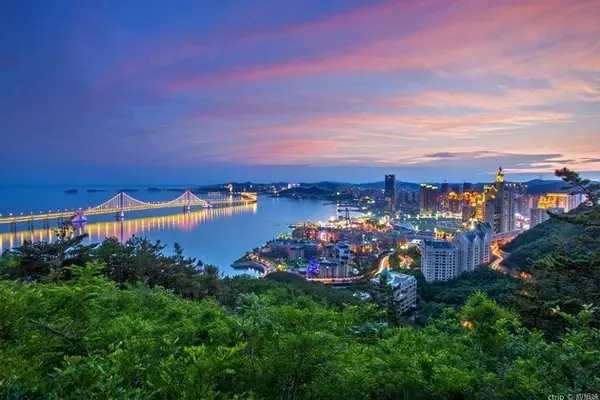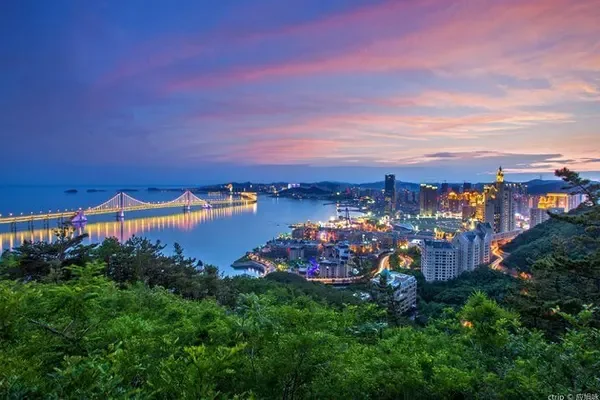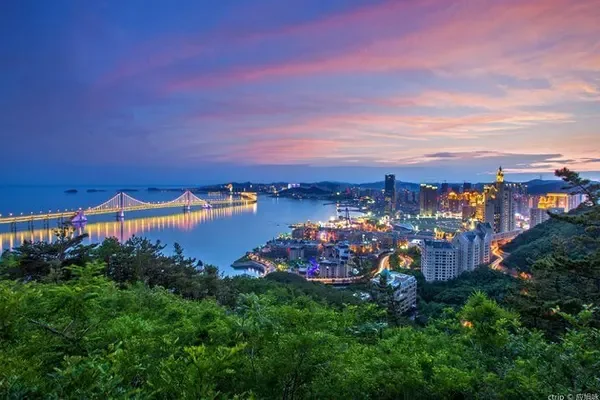Shanxi 7-Day Historical and Cultural Tour
This summer, Nanjing is surprisingly hot, and the high temperature is still 40 degrees in late August. In order to avoid this annoying high temperature, I decided to go to Shanxi, a large northern province that is already cool, for a few days. Shanxi is the root of Chinese culture. It is located in the east of the Yellow River and west of the Taihang Mountains, with a basin in the middle. There are also large rivers such as the Yellow River and the Fen River in the territory.
Day 1: Nanjing Lukou Airport - Taiyuan Wusu Airport in the morning, visit Shanxi Museum in the afternoon
From Wu to Jin, the best way to understand a city is to visit museums. The main hall of Shanxi Museum looks like a bucket and a tripod. The interior of the upper and lower floors is modeled after the wooden pagoda of Yingxian County. The bronzes, sculptures and murals in it They are all very distinctive. The two important exhibition halls of "Jin State Hegemony" and "Ming and Qing Shanxi Merchants" are being re-arranged and cannot be visited, leaving a little regret. The bronze bird statue is the most famous cultural relic in Shanxi Museum. Although I haven't been able to see it, buying some of its cultural creations is still a must.





In the evening, go to the food street in Taiyuan to taste authentic Taiyuan dishes. Taiyuan Liuxiang Food Street is the oldest and most prosperous commercial street in Taiyuan, and one of the most popular food streets in Taiyuan. It is one of the "Four Largest Night Markets in China". One of the "Top Ten Commercial Streets in China", known as the "Wangfujing" in Taiyuan, the streets at night are bright and lively!



Day 2: One-day tour of Mount Wutai
Wutai Mountain is located in Xinzhou City, Shanxi Province. Surrounded by five peaks with platform-like peaks, it has beautiful scenery and is also a famous summer resort. This is the dojo of Manjusri Bodhisattva, and there are many temples, ranking first among the four famous Buddhist mountains in China. Mount Wutai is the only Buddhist monastery in China where the green temple (Chinese Buddhism) and the yellow temple (Tibetan Buddhism) complement each other. The small Wuye Temple is the most popular temple in Wutai Mountain. Believers and tourists vie for it. Lord (the fifth son of the Dragon King of the East China Sea) offered incense, prayed for blessings and made wishes. It is said that he will respond to requests and is very effective.



Day 3: Shanxi Bronze Museum in the morning, Jinci Temple in the afternoon
The Shanxi Bronze Museum is located on the bank of the Fen River. First, go to the nearby Fen River for a walk. The Fen River passes through the urban area of Taiyuan from north to south. The scenery is beautiful, there are many high-rise buildings, and many bridges with different design styles span the two banks, becoming a beautiful landscape in Taiyuan.


Shanxi Bronze Museum is a newly built museum with a sense of design. The basic display of "Jijin Guanghua" exhibits more than 2,200 bronze artifacts, starting from Taosi and going down to Qin and Han Dynasties, spanning the entire Bronze Age, especially Jin. A large number of exquisite bronzes unearthed from the tomb of the nobleman Zhao Qing are amazing in both quantity and exquisiteness!



The Jin Temple is a temple built by later generations to commemorate Tang Shuyu, the founding prince of the Jin Kingdom. With a magnificent history of one hundred years, it has become one of the important birthplaces of Chinese civilization. It is known as "Taiyuan is in vain if you don't go to Jinci Temple". Pass through Jinci Park to reach the main scenic spot of Jinci, where you can visit the "Three Treasures" of Jinci: Xiandian, Yumao Feiliang, Notre Dame Hall,


The "Three Wonders" of Jinci Temple: Zhou Bai, Nanlaoquan, clay sculpture and painted portraits.



Day 4: High-speed train Taiyuan-Datong in the morning, visit Yungang Grottoes in the afternoon
Datong is located on the Loess Plateau in the north of Shanxi Province, bordering the Mongolian grasslands in the north and the Central Plains in the south, where various ethnic groups communicate and integrate continuously. It used to be the capital of the Northern Wei Dynasty, the capital of the Liao and Jin Dynasties, and an important town in the Ming and Qing Dynasties.
The Yungang Grottoes were first built in the Northern Wei Dynasty when the capital was established in Pingcheng. They not only have the traditional Chinese artistic style, but also integrate the artistic features of ancient India, the Western Regions and the Central Plains. The most representative one is the open-air Sakyamuni sitting statue in Cave 20, with a semicircular face, deep eyes, high nose, big eyes and thin lips, which retains the typical facial features of ethnic minorities in the Western Regions and Indians. The Yungang Grottoes represent the outstanding Buddhist grotto art in China from the 5th to the 6th century A.D., among which the Tanyao Five Grottoes are classic masterpieces of the first peak period of Chinese Buddhist art. The entire group of grottoes is built from east to west according to the natural mountains. The air quality in Datong is good, and the sky is dark blue, also known as "Datong blue". There are not many tourists and the experience is very good.




Day 5: Hanging Temple, Yingxian Wooden Pagoda, Huayan Temple
Hanging Temple: Located between the cliffs of Mount Heng, it was built in the Northern Wei Dynasty and has a history of more than 1,500 years. It is a unique temple integrating Buddhism, Taoism and Confucianism. The architecture is very distinctive. You can see the Hanging Temple hanging on the mountainside, which can be described as a building on the abyss. Standing on the narrow stairs of the Xuankong Temple, I am even more dazzled and my legs are weak, and I admire the wisdom of the ancients even more.


Yingxian Wooden Pagoda: The full name is "Shakya Pagoda of Fogong Temple". It was built in the Liao and Jin Dynasties and is the oldest existing wooden pagoda in my country. This octagonal wooden tower is about 60 meters high. Except for the four-meter-high stone platform on the first floor, the rest of the parts are made of wood. No nails or rivets are used, and all of them are made of traditional crafts. Mao built. The wooden pagoda has survived violent storms, earthquakes and artillery bombardment, and it still stands. It is a "unique and great work" in Liang Sicheng's eyes.


Huayan Temple was first built in the Liao Dynasty. The scale of the Daxiong Hall is second only to the Hall of Supreme Harmony in the Forbidden City in Beijing, but it was built more than 500 years earlier than the Hall of Supreme Harmony. Chi Kiss is 4.5 meters high, and has the elements of a grassland yurt. In the main hall, there is a bodhisattva with palms together and toothy, with a graceful figure and a smile on his face, known as the "Oriental Venus".



In the entire Datong scenic spot, only Yungang Grottoes and Huayan Temple need to buy tickets, and the others are free, which is very friendly to tourists.
Day 6: Datong Ancient City in the morning, Datong Museum in the afternoon
The ancient city of Datong has a long history. The existing city wall was built by General Xu Da of the Ming Dynasty on the basis of the old cities of Han, Wei, Tang, Liao, Jin and Yuan in the fifth year of Hongwu in Ming Dynasty. There are many historical sites to visit in the ancient city. There is a feeling of traveling through time and space on the city wall, where the modern atmosphere and the style outside the Great Wall meet.
Nine-Dragon Wall: It was originally the screen wall in front of Zhugui's mansion in the early Ming Dynasty. It has a history of more than 600 years. Among the three existing Nine-Dragon Walls in my country, the one with the earliest architectural age and full of artistic charm uses yellow, green, blue, purple, black, It is made of white and other colored glaze components, with different postures and lifelike.

Fahua Temple: There is Fahua Pagoda inside. It was built in the Yuan Dynasty. It is the only existing bowl-shaped glazed Lama Pagoda in Datong. It is named because there is a "Fahua Sutra" in the pagoda.


Datong Confucian Temple was rebuilt from Yunzhong Post in the early Ming Dynasty. The main building, Dacheng Hall, faces south and was built in the Ming Dynasty.


Shanhua Temple was first built in the Kaiyuan period of the Tang Dynasty, and its architecture retains the characteristics of the original Tang Dynasty. The Tianwang Hall, Sansheng Hall, Daxiong Hall, and Puxian Pavilion are all original structures from the Liao and Jin Dynasties. It is the largest and most complete Liao and Jin period in China. Buildings.




Datong City Museum: The collection is famous for the culture of the northern minorities, the military culture of the border town, and the religious and cultural characteristics. Numerous cultural relics and historical sites tell us about the history of Datong's civilization for more than two thousand years, especially the fine cultural relics of the Northern Wei, Liao, and Jin Dynasties , leading the way in the country and enjoying a high reputation. In particular, the unearthed cultural relics from the ancient tomb of Langxie King Sima Jinlong and his wife in the Northern Wei Dynasty are extremely rich.




In the evening, take the high-speed train to Taiyuan.
Day 7: Taiyuan Twin Towers Park in the morning, Taiyuan Wusu Airport-Nanjing Lukou Airport in the afternoon
Yongzuo Temple in Shuangta Park has east and west twin towers, which are octagonal in shape and have 13 floors. The two towers are very similar in appearance but represent two religious cultures. The east tower is called Wenfeng Tower, which is a product of Taoist culture. The west tower is called Xuanwen Pagoda, which is a symbol of Buddhism, and the twin towers have become the symbol of Taiyuan.

Shanxi has a long history. The Xia, Shang, and Zhou dynasties were all established in Shanxi. There are many historical sites in the territory. As the saying goes, "Look at Shaanxi for underground cultural relics, and Shanxi for above-ground cultural relics." Different cultures have collided and blended throughout the ages.
Tips:
Clothes: In mid-to-late August, the north is already cool, and the temperature difference between morning and evening is large, especially in Datong, where it is sometimes only ten degrees in the morning, so you need to bring a coat. The ultraviolet rays are very strong at noon, so pay attention to sun protection.
Food: The staple food is mainly pasta. Taiyuan dishes are delicious, while Datong dishes are even better. Datong sliced noodles and Hunyuan jelly are not to be missed, and the prices are moderate.
Accommodation: There are many hotels in Taiyuan. It is best to live in the ancient city of Datong, so that you can feel the charm of the ancient city.
Travel: Both Taiyuan and Datong have airports and high-speed rails, and it is very convenient to take a taxi in small traffic.
Shopping: Datong's local products, dried apricots, day lily, and seabuckthorn cake are all good and worth buying.

